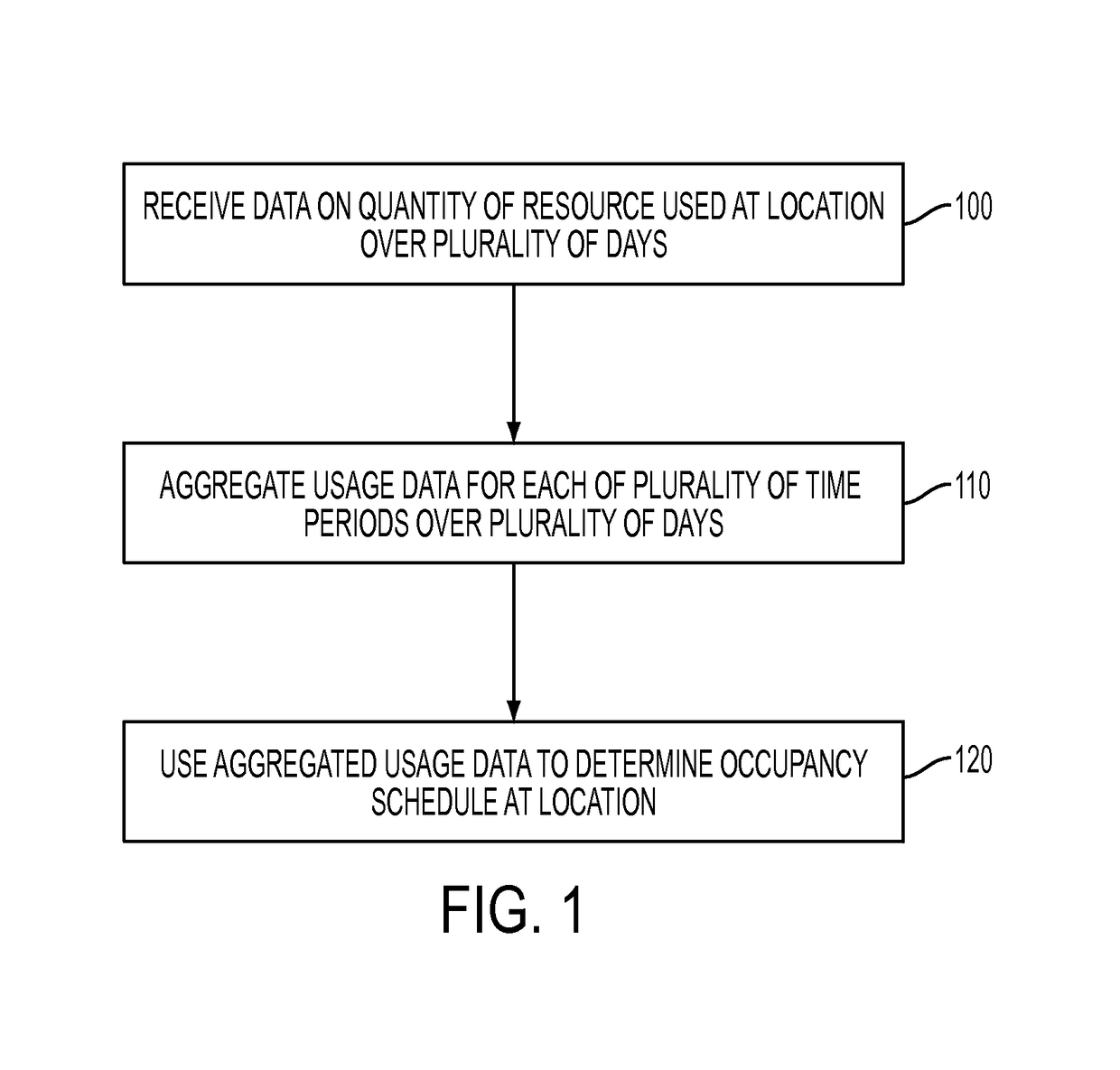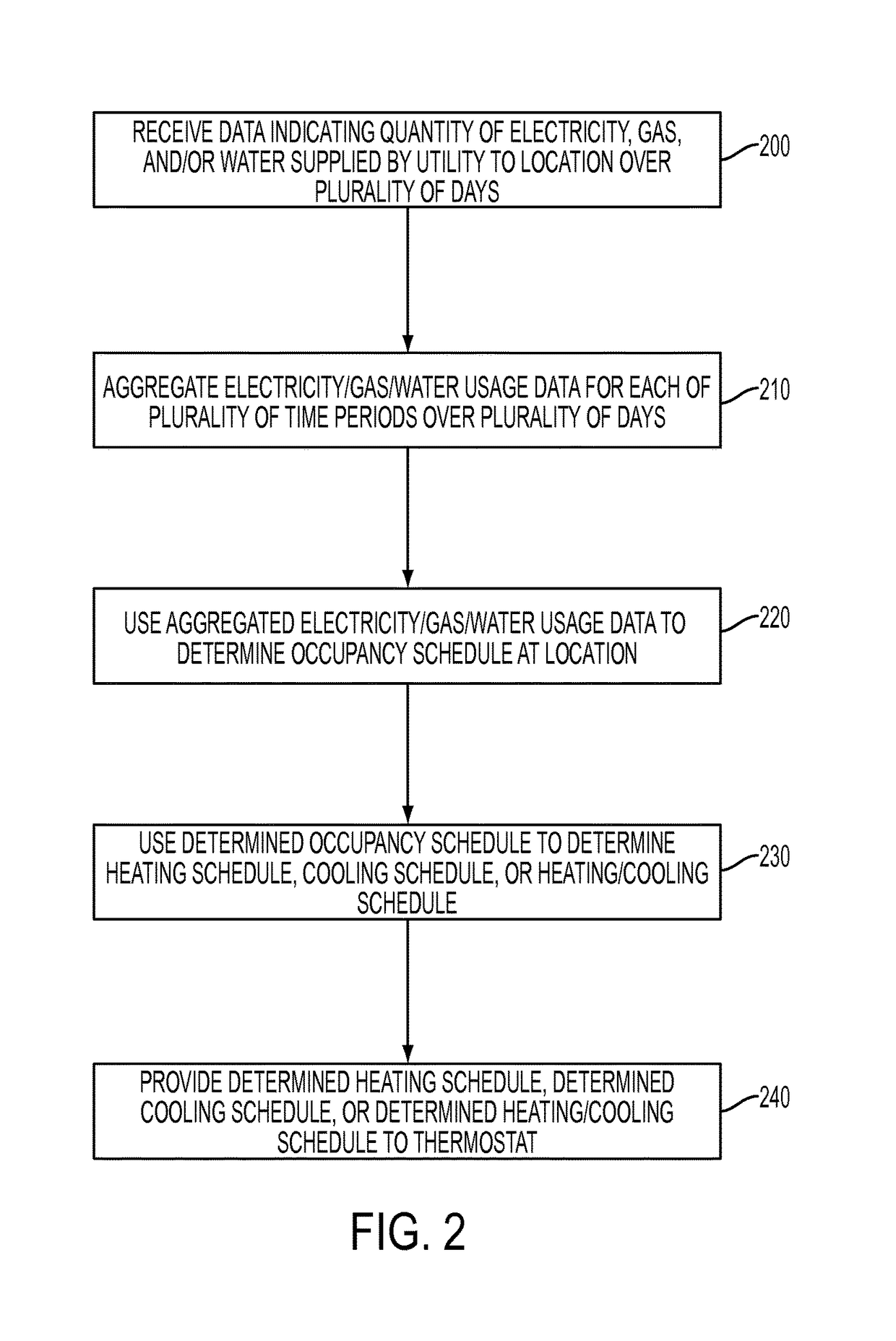System and method for determining occupancy schedule for controlling a thermostat
a technology of occupancy schedule and thermostat, applied in the field of energy conservation, can solve the problems of inability to update, time-consuming or complicated thermostat programming, and compromise of energy efficiency
- Summary
- Abstract
- Description
- Claims
- Application Information
AI Technical Summary
Benefits of technology
Problems solved by technology
Method used
Image
Examples
example
[0168]1. For each node, n
[0169]penalty_n=1 / (count(n) / N)
[0170]The supervised prediction approach may be modified to take advantage of k-nearest-neighbor type algorithms that do not require separate models for each node in a given layer. Specifically, according to an embodiment, the following steps may be performed:[0171]1. Create a data set of known hierarchical schedules and load curves associated with the known schedules to use in the algorithm[0172]2. Calculate the predictor inputs for the load curves associated with the known schedules[0173]a. For each known user k:[0174]i. predictor inputs_k=f(load curve_k)[0175]3. Apply the same predictor input function to the load curve of user u[0176]a. predictor_inputs_u=f(load_curve_u)[0177]4. Create a single model of all node likelihoods[0178]5. Calculate the k nearest neighbors for the user's inputs by comparing predictor_inputs_K to predictor_inputs_u[0179]a. Any distance function may be used; Euclidean distance may be used as a default[...
PUM
 Login to View More
Login to View More Abstract
Description
Claims
Application Information
 Login to View More
Login to View More - R&D
- Intellectual Property
- Life Sciences
- Materials
- Tech Scout
- Unparalleled Data Quality
- Higher Quality Content
- 60% Fewer Hallucinations
Browse by: Latest US Patents, China's latest patents, Technical Efficacy Thesaurus, Application Domain, Technology Topic, Popular Technical Reports.
© 2025 PatSnap. All rights reserved.Legal|Privacy policy|Modern Slavery Act Transparency Statement|Sitemap|About US| Contact US: help@patsnap.com



